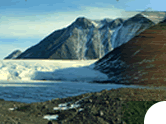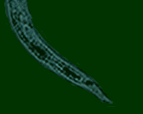Global Litter Invertebrate
Decomposition Experiment
Gobabeb
Training and Research Centre, Namibia
Site Manager
Dr.
Joh R. Henschel
Desert Research Foundation of Namibia (DRFN)
P.O.Box 20232
Windhoek
Namibia
Telephone: (+264) 61 229855
Fax: (+264) 61 230172
Site Description
The Gobabeb LTER
program was established in 1962. The scientific staff and
collaborators are responsible for over 1300 publications.
Research topics vary from biophysical to ecological and
social themes, but is focused on desertification. Gobabeb
has been a park or reserve for nearly 100 years, with the
indigenous tribe of Topnaars (Khoikhoi). They are subsistence
farmers living along the Kuiseb River. Local issues of
concern are desertification, resource management in a changing
socio-economic environment, natural resource/wildlife conservation,
as well as capacity building of Nambians.
Site Location
Gobabeb site coordinates
are 23°33.704 S, 15°02.466 E. Gobabeb is situated
in the Central Namib Desert, 115 km from the closest
town of Walvis Bay (ca. 40,000 people), Namibia's only
deep-sea harbour. The LTER study sites stretch across
300 km of hyperarid desert from Walvis Bay to Windhoek,
Namibia's capital city.
Site
Area
Site area is 200 x 200 km
with 8 principal sites with permanent weather stations
located mostly in the Namib-Naukluft Park of ca. 8000
square kilometers.
Site
Elevation
Site elevation is 406 m (56
km from coast).
Annual Rainfall
Average annual rainfall is
27.2 mm (ranging from 2-115 mm); average relative humidity
is 50% with most moisture coming from fog not rain.
Annual Temperature
Average annual temperature
is 21.1° C (ranging from 1.0-44.9°C).
Soil
Soil types are sand dunes,
gravel plains, Inselbergs, washes and ephemeral river.
Native
Forest/Vegetation Types
Native vegetaion is riparian
forest in ephemeral river.
Principal
Biome/Ecoregion
Principal biome is hyperarid
hot desert.
Photo Gallery
|










